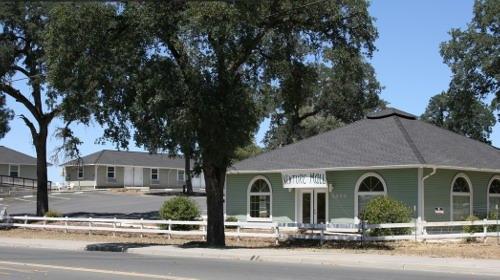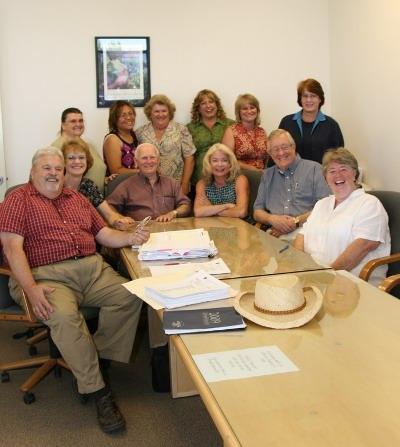- Lake County News Reports
- Posted On
Foodie Freak: Lions and tigers and tapeworms
Many of the stories currently causing the tapeworm scare stem from a Chicago man who is suing a restaurant, claiming he was infected with the tapeworm from a raw salmon dish in 2006 that has since grown to be a 9-foot-long tapeworm.
Oddly enough, almost all of the articles on the subject stop just short of revealing the fact that the Chicago Department of Health has cleared the restaurant in its own investigation. Hey, don’t let the facts get in the way of a sensational story!
Sushi and raw fish make great punching bags since they are scary and foreign foods. Nobody wants to mention that you can catch a tapeworm from beef and pork, by playing with your dog, or just shaking the hand of a person who has a tapeworm. Believe it or not, you can even catch a tapeworm from eating your breakfast cereal (if an infected bug is in it). Beef and pork tapeworms are the most common in America, yet we don’t seem to hear about those cases. Evidently the beef industry must have a high-priced assassin on retainer scaring off any reporters.
I was recently in a Sacramento sushi bar and was watching the sushi chef prepare ingredients and put them in the refrigerated case. When you have been in the aquaculture and food industry as long as I have, you develop an eye for spotting things that don’t fit. I watched the chef pull out a tilapia filet and then trim away some of the major red portions of the meat so that the filet now looked like a small red snapper filet.
In a matter of a few moments he had turned an inexpensive freshwater fish into what looked like an expensive saltwater fish. The average tilapia filet sells for $2 a pound while the snapper demands almost $20. In the past, I have found some Lake County restaurants substituting tilapia for red snapper on their menus. Not only do tilapia filets look different than snapper filets but tilapia tastes a lot like an anorexic snapper.
In Japan this type of substitution is a fairly common practice since the Japanese are much more interested in the flavor of the sushi, not the pedigree. Red snapper on Monday’s menu could actually be red snapper, while on Wednesday it might come from a rockfish. This has never been a real problem until tilapia came along. Salt water fish have a very low incidence of parasites while freshwater fish, like the tilapia, have a very high incidence of parasites.
Most (not necessarily all) saltwater parasites come from fish that are infested with marine mammal parasites. These marine mammal parasites don’t find the human body a hospitable place and usually die within a couple of weeks at most.
Freshwater parasites on the other hand, tend to be tapeworms which love the human body and travel though it like tourists on a three day weekend. As I’m sure you already know, tourists sometimes turn into residents and never leave. These tapeworms can live in a body for decades without giving off any symptoms at all. The fact that tapeworms can live in the body for so long without detection makes it very unlikely that the infected person could accurately trace ingestion back to the original source, and so sushi bars tend to get blamed just out of convenience.
Tapeworms can be contracted from any kind of restaurant that uses poor sanitation practices. The fact that sushi is prepared in front of the customer means that sushi bars tend to be cleaner than most other types of cuisine. Sushi chefs are trained to spot parasites in sushi, so only eat sushi prepared by high quality restaurants that know what to look for.
A little information about tilapia. Tilapias are actually several varieties of fish related to the Oscars that you see in aquariums everywhere. They are fast growing and omnivorous, meaning they’ll eat just about everything.
Vegetarian fish food is the least expensive to purchase so most fish farms use it. This keeps costs down and mercury levels almost non-existent, which is the good news. However this diet also adds no omega fatty acids that fish is so valued for, so at best tilapia is a good source of protein but that’s about all.
Tilapia also can be raised in almost any conditions, so a field being used to grow rice can also be used to raise tilapia, making the land more useful but also keeping the price on the fish low. On the other hand, this keeps the tilapia trapped in a small shallow pond to be an easy victim to play host for tapeworms. This is also why you only see saltwater fish on the sushi menu, but freshwater fish such as catfish, largemouth bass and bluegill must be cooked before eating to eliminate (kill) any parasites.
Since tilapia isn’t considered to be a common sushi ingredient it isn’t required to be frozen to sashimi grade standards. If you get a fish wholesaler that wants to make a higher profit he may offer tilapia to sushi bars as “red snapper,” and if the sushi chef doesn’t know better he may just offer this tilapia as snapper. Or it’s possible that, along the lines of what I witnessed, a sushi chef who wants to save some money will actually cut the tilapia to look like snapper. Either way, a knowledgeable and ethical sushi bar can stop Red Snapper from being counterfeited.
Now I don’t want to sound like an alarmist, so let me give you a statistic that might calm you. While it’s possible to catch a tapeworm from ingesting almost anything if it’s not properly or handled in a sanitary fashion, the incidence of tapeworms treated in the United States every year is about one person out of every 100,000. That is less than one person in the entire county here. So the chances of catching a tapeworm are very slim.
To be perfectly honest I have filleted hundreds of fish in my life and I have only actually ever found two live parasites in supermarket-purchased fish. The risk is there, but chances are quite low.
However, since I still buy Super Lotto tickets, this proves I believe in the long shot and I think it’s better to be safe than sorry, so if you want to make sushi at home but also want to avoid being like one of those people on the “Alien” movies with the creature bursting out of your chest, here’s how ...
First and foremost, only use commercially caught fish for sushi. The possibility of a home-caught fish being infected with a parasite is very high and despite what you hear about freezing fish killing parasites, your home freezer cannot reach the temperature needed to kill parasites. I’m sure that more than one fisherman reading this has frozen fish at home and thawed it weeks to even months later only to have the fish come back to life, and if the fish can do it the parasite can certainly do it too.
Secondly, when at the fishmonger’s be sure to ask for sashimi-grade fish. This is a fish that has been nitrogen blast frozen then stored at an incredibly cold temperature regulated by the Food and Drug Administration which has been shown to decisively kill all parasites.
Sashimi-grade fish go through several layers of grading and testing before they make it to the standard, each test making the fish that much safer than before. If you see a fish marked “sushi grade,” it is exactly the same as sashimi grade. The phrase “sashimi grade” is the actual FDA term while “sushi grade” is just the dumbed-down expression.
It’s best that you don’t make sushi at home without some sort of training. Of all of the cases of parasitic infection that are found per year, almost all of them are attributed to fish being served raw in some form by an untrained cook at home.
So take the time to take a sushi making class.Coincidentally I am planning to teach another one soon at Chic Le Chef in Hidden Valley Lake. Contact Julie Hoskins at Chic Le Chef, telephone &07-355-0174, or visit 19024 Redbud Road in Hidden Valley Lake for information on a class.
Ross A. Christensen is an award-winning gardener and gourmet cook. He is the author of "Sushi A to Z, The Ultimate Guide" and is currently working on a new book. He has been a public speaker for many years and enjoys being involved in the community.











